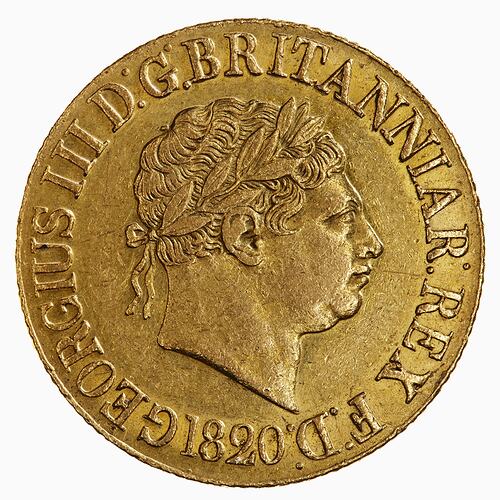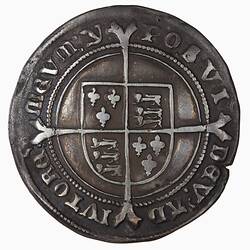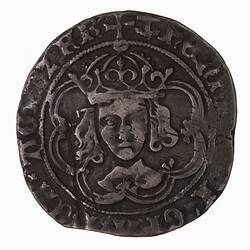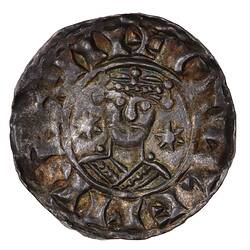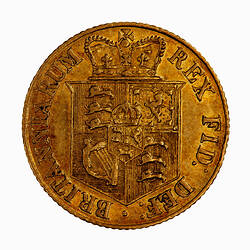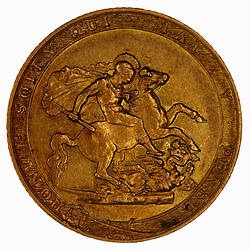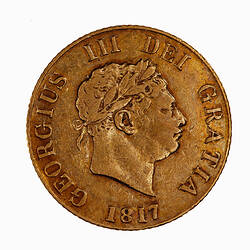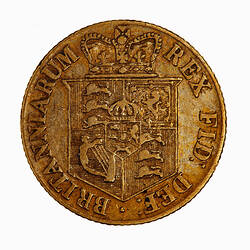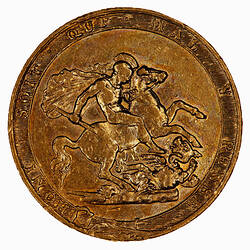On 7 February 1798 a committee of the Privy Council recommended that a new Royal Mint with the latest machinery should be built. A site on Tower Hill that had been a Royal Navy victualling yard was selected and Matthew Boulton, James Watt and John Rennie were charged to supply the latest in steam minting machinery. The presses were at that time still operated on the basis of the screw but they were now steam powered and fed through automatic blank feeders.
1816 saw another crisis in the need to produce huge numbers of coins. The war with France had been successfully ended and attention was again turned to the state of the British coinage. Private tokens and even official tokens struck at the Soho Mint for the Bank of England and the Bank of Ireland had filled the gap wrought by incessant warfare and industrialization. Paper money, in the form of bank notes also took solid root during this era.
However in 1816 it was decided that a new coinage would be undertaken. The gold guinea, then current at 21 shillings, would be discontinued and replaced by a new 20 shilling coin, the sovereign. Silver coins would henceforth be token, that is, they would not contain metal equal to their denomination, only enough to make quality forgery unprofitable.
With its new machinery and buildings the Royal Mint was up to the task although there was much jockeying among the engraving staff. At that time the Wyon family was very strongly placed but an Italian artist, Benedetto Pistrucci found powerful support. It was 1828 before a solution to the resultant artistic unbalance was found. Pistrucci created the famed St. George and the dragon design employed on much gold and on the silver crown (five shilling coin). On the crown from 1818 until 1820 he spelled out his full name, PISTRUCCI, in the exergue, leading to later complaints.
The sovereign soon became renowned for its consistency and quality of production throughout the world. In 1848 a Royal Commission removed the last of the rights of the Moneyers and the employees of the mint became civil servants like others working in Government Departments.
While the machinery at the Tower Hill site had been state of the art in 1811 by 1870 it was very outdated. In 1874 and again in 1880 Bills were introduced in Parliament for the construction of a new mint but a Select Committee eventually decided on a refurbishment of the Tower Hill site. By 1890 the Royal Mint could produce 70 million coins a year, a figure pushed to 150 million before the outbreak of World War I. After the war it was necessary to award contracts to private mints to meet public needs for coins. Another re-building was undertaken and completed in 1925.
The last coin struck in London, in November 1975, was a gold sovereign, dated 1974.
References
The Royal Mint, An Outline History, London 1977
Dyer, G.P. Royal Sovereign 1489-1989, Royal Mint Publications, London 1989
Cooper, Denis R. The Art and Craft of Coinmaking, Spink & Sons, London, 1988
Annual Reports of the Royal Mint
Challis, C. E., A New History of The Royal Mint, Cambridge University Press, 1992 http://www.royalmint.com/Corporate/History/TheRoyalMint/llantrisant.aspx
More Information
-
Keywords
-
Authors
-
Article types
